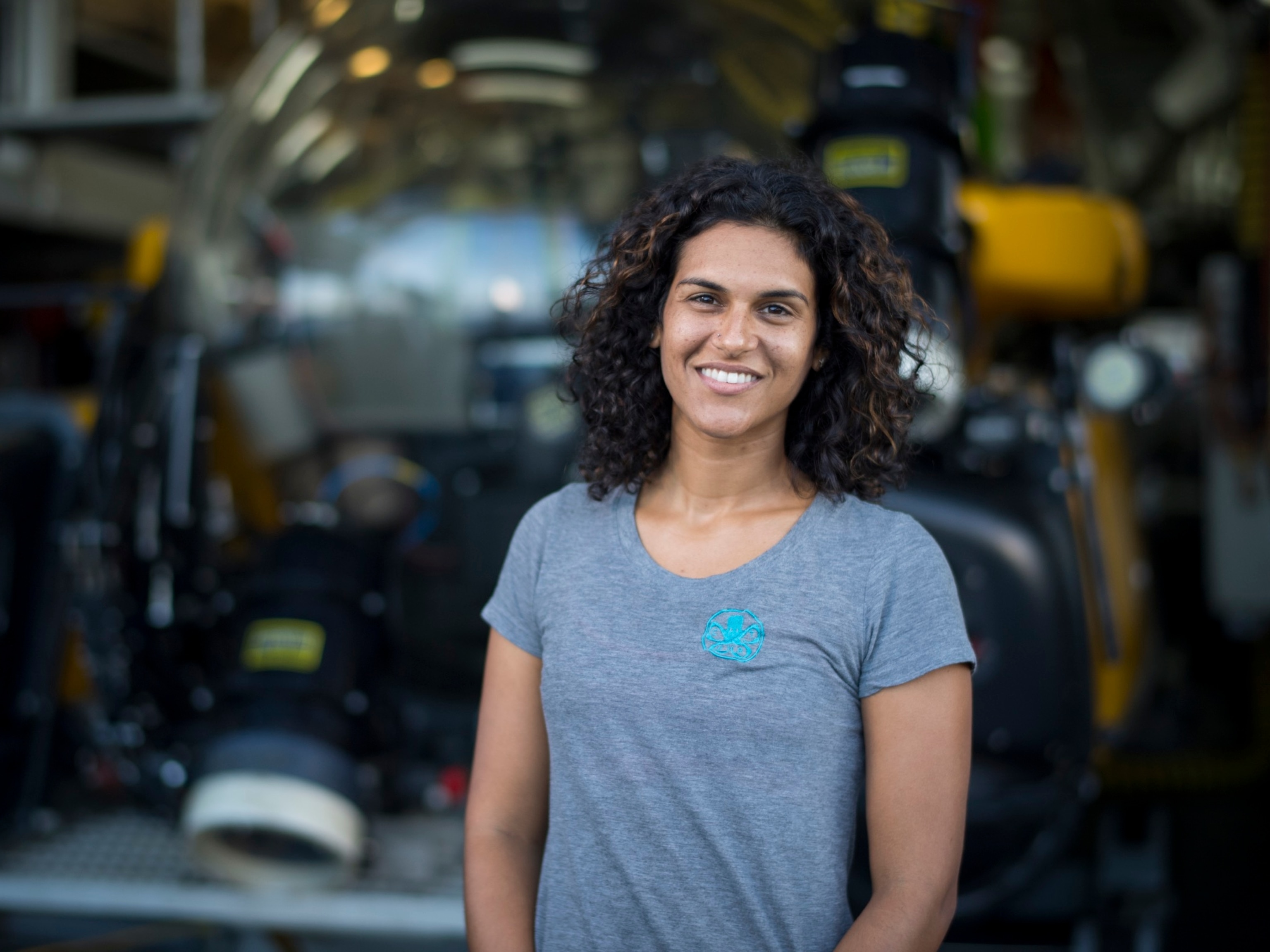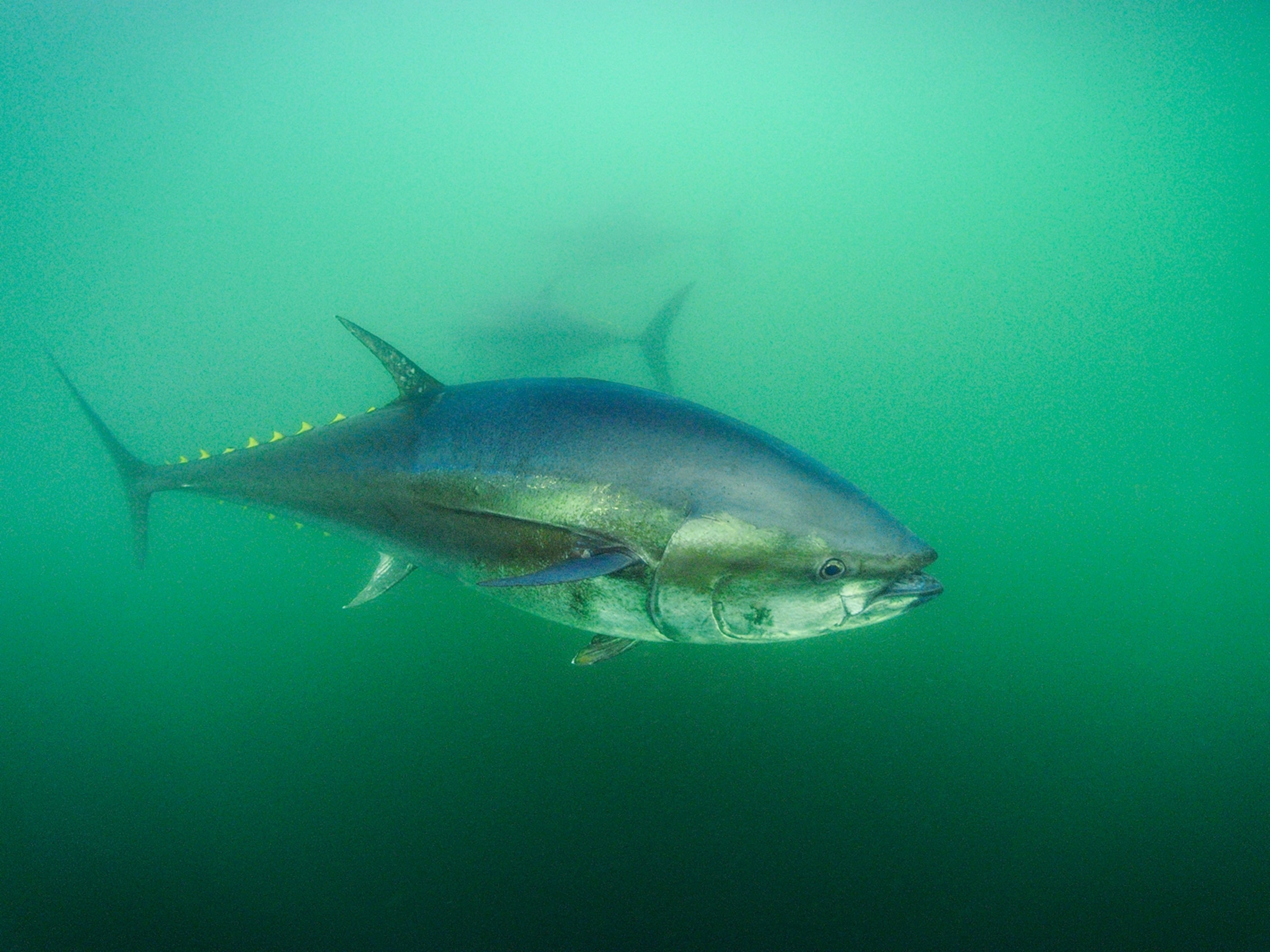Gibbs Kuguru: Deciphering the untold story of sharks
National Geographic Explorer Gibbs Kuguru is using groundbreaking genetic research to reveal new information about the shark kingdom, and how humans might protect it.
Years on from his first seafaring experience, some things never leave National Geographic Explorer Gibbs Kuguru after a day at the field station. “You never forget the smell of chum,” he laughs, along with the sound of waves hammering rock, seals barking on shore, and a boat crew howling as a shark breaches the ocean’s surface—this is what Kuguru is looking for.
_16x9.jpg)
As a shark scientist and geneticist, he divides his time between the sea and the laboratory to study one of nature’s most feared predators. Shark iconography typically highlights the animal’s most apparent attributes—its jaws, propensity for attacks, and predatory skill—but from Kuguru’s point of view, there is more than meets the eye.
“I can see why people get caught up in all that—they are stunning,” Kuguru agrees. But some details haven’t been fully appreciated, like the fact that some sharks may be able to change color, they’re entirely boneless, and have extreme regenerative abilities. Discovering and highlighting remarkable qualities such as these is one way Kuguru is helping ensure their future.
“I think it’s always worthwhile to look past the teeth and see these animals as unique beings that live on this planet, just like us,” he insists.
Kuguru, a 2022 recipient of the National Geographic Wayfinder Award, is particularly interested in shark genetics. He interprets the oceanic beast’s genetic material to better understand the unique elements that shape their populations, including the human footprint left on shark’s genes.
_3x2.jpg)
_3x2.jpg)
For his doctoral studies in genomics (the marriage of genetics to computer science) at the Netherlands’ Wageningen University and Research, Kuguru examines skin pigmentation changes in blacktip reef sharks native to the Maldives. The loss of coloration, known as leucism, has yet to be explained, but Kuguru knows the reaction has been detrimental for the species’ population. Functional genomics, or examining what certain genes do, helps him identify where the color deficiency is coded in the affected sharks’ DNA and get closer to determining the cause.
Though invested in lesser-known species, the archetypal great white has not escaped Kuguru’s attention. With shark biologist Ryan Johnson, Kuguru conducted first-of-their-kind experiments which suggest that great whites in particular may be able to alter their color, perhaps to better ambush their prey.
This research methodology is groundbreaking. In the film Camo Sharks, part of National Geographic’s SharkFest programming, Kuguru is seen gasping as a shark leaps into the air to snap a decoy seal in tow, posing just long enough for a camera to capture the animal midair, adjacent to a greyscale colorboard.
The shark’s color is compared between its resting and breaching states, and during various times of day. While the study is still preliminary, Kuguru and Johnson confirmed camo-mode in sharks off the coast of South Africa, and the pair continue to run experiments to investigate what motivates the phenomenon.
Anxiety-inducing scenes from the film show Kuguru free diving into a sea of black at nightfall—but for the seasoned shark wrangler and researcher this is a typical day’s work, and fear plays no part. His experience has helped him reshape the standard perception of sharks and humans as adversaries.
“What I want people to realize about sharks is we have this actual kinship on a very physical and real level,” he explains. “All that fear, all that anxiety, it just goes away,” he says about swimming with the largest predatory fish on the planet.
His fascination with the animals started with a leap of faith. When Kuguru saw a flyer calling for help at a cage diving company in South Africa, he jumped at the chance. After one dive he was hooked, though he questioned the twist in his career path, which until the point, was paved toward medical school. He pushed past the doubting in pursuit of what he says he felt like a calling.
“I just knew I needed to be around those animals,” he remembers.
After six years diving in South Africa’s Mossel Bay, Kuguru was determined to conduct research of his own. He traveled to his native Kenya to investigate cartilaginous fishes there and discovered a lack of coastal infrastructure to support work like his. Since, he’s been filling gaps in understudied species and places. Hammerheads, threshers, blues, and sand tigers are a few types of sharks he’s worked with.
Science is uncovering new reasons why shark conservation is vital, including the possible implications of their regenerative abilities for humans, Kuguru cites.
“We are always focused on big players in the game,” he says, now referring to countries typically infamous for their unsustainable fishing practices, but new data shows key contributors to marine overexploitation in regions often overlooked. According to recent figures, overfishing and consumption around the globe have cut some populations by 95 percent.
Researchers in his field have found genes that code for sharks’ adaptive immunity. “We’ve actually looked at these genes that are responsible for this and are trying to find a way to use them biomedically,” he explains. “Maybe we find a way to do some kind of gene therapy, so the next time someone loses a finger or gets cancer we can say ‘there’s an answer in the animal kingdom for that.’” He cautions this sort of medical application is not yet happening, but just the prospect signals to Kuguru a kinship amongst living things.
A second part of his great white research, as documented in Camo Sharks, shows how shark skin responds to hormones in the same way a human’s does.
“It baffled me to think that we’re all cut from the same cosmic cloth of life. We have so many things in common it makes me feel like we’re all part of this fabric,” Kuguru says. “Sharks help me feel connected to the planet like that.”
_16x9.png)
The whirlwind to acquire the hormones needed for such a study made the revelation all the sweeter. MSH, or Melanocyte-stimulating hormone, in particular was difficult to come by. With supply strained by the pandemic, Kuguru got creative.
“After a Google search I realized MSH was in tanning injections…basically, you inject yourself with this hormone and then it causes your skin to flush out a bunch of melanin and then you get darker.”
He contacted a woman about buying a whole box of her supply—an unusual request for the seller. “She’s like, ‘I’m going to send my husband,’” he remembers, laughing at his unorthodox approach.
“And then it works. It not only works, it works perfectly.”
Working in the wild, as Kuguru explains, is a blend of this kind of excitement and monotony.
“You stare at water a lot,” he says frankly. It can take weeks to spot a shark, despite starting the day at 5 a.m. and being on watch until sundown—but the reward is worth the wait, and the surprise doesn’t fade. “It sends goosebumps down my spine every time. You can’t help but feel emotional every time you see it,” he says, turning to the camera after a breach caught on Camo Sharks blasts water into the air.
For his contribution to research and the future, he says “I’m not going to save the world, most likely. I think it’s going to take everybody, all the time to do it,” but Kuguru hopes his work will inspire the next generation of scientists to follow their curiosities, whatever form they take.
“If a kid watches the shark documentary and thinks ‘I want to do that too,’ that’s enough for me. I don’t need anything else.”
ABOUT THE WRITER
For the National Geographic Society: Natalie Hutchison is a Digital Content Producer for the Society. She believes authentic storytelling wields power to connect people over the shared human experience. In her free time she turns to her paintbrush to create visual snapshots she hopes will inspire hope and empathy.



